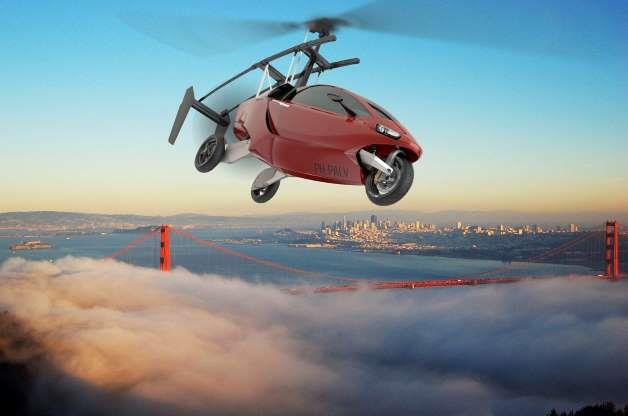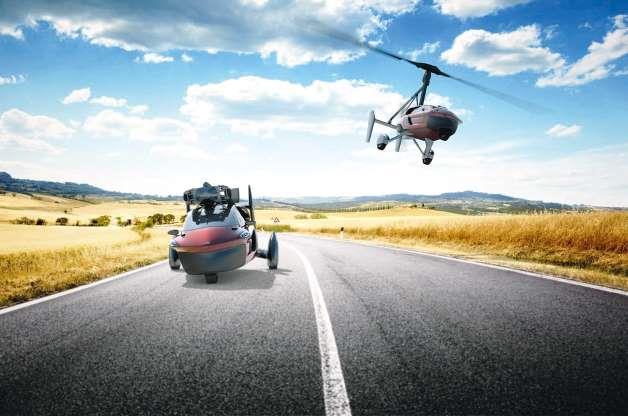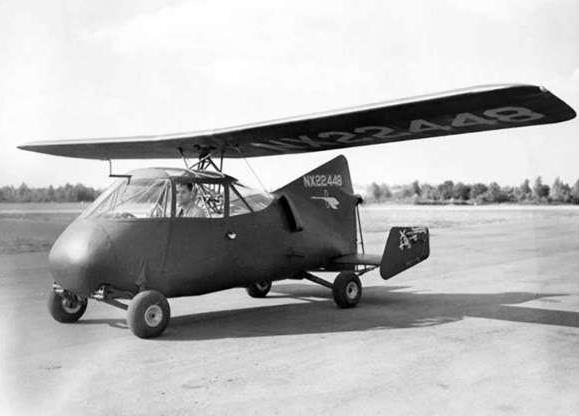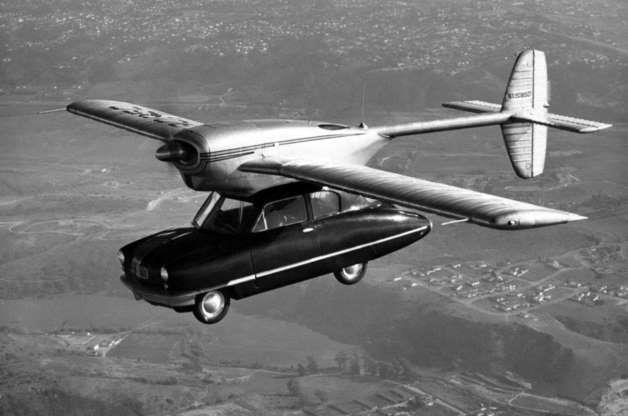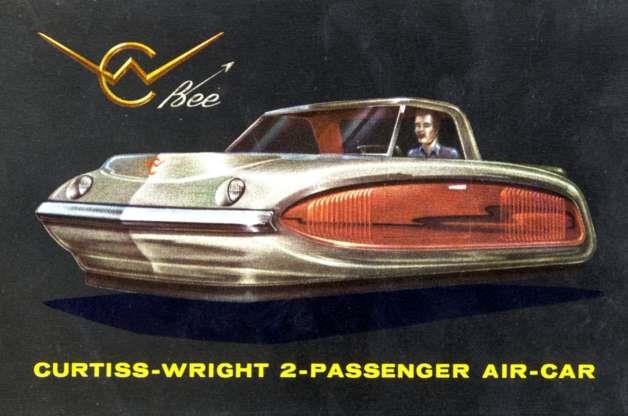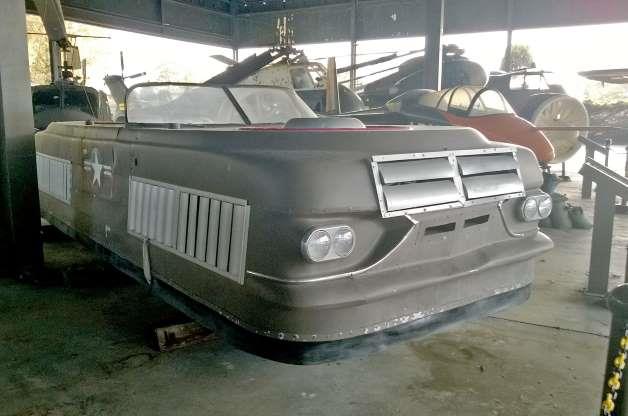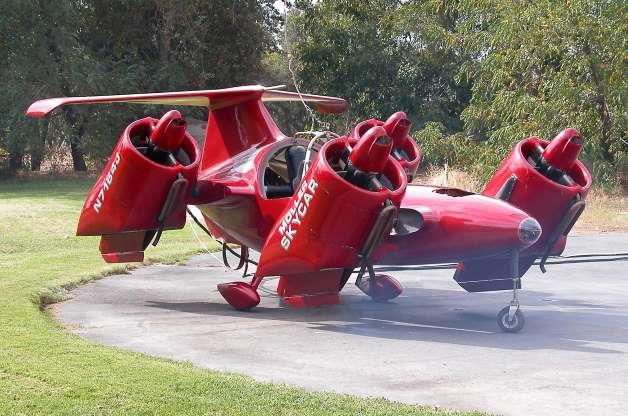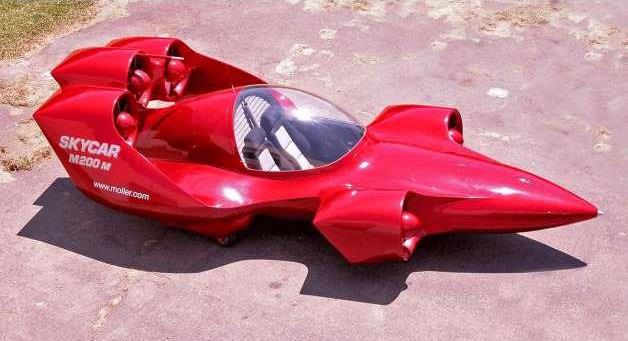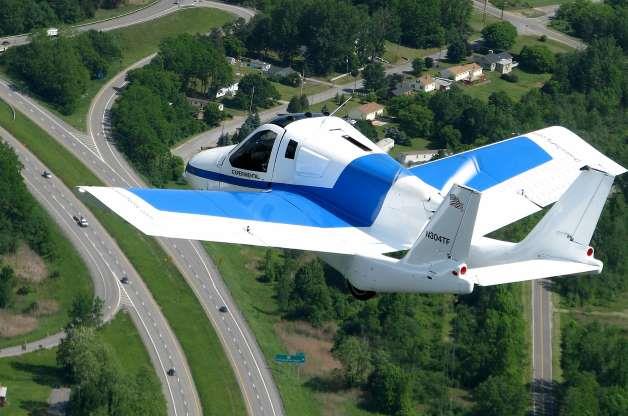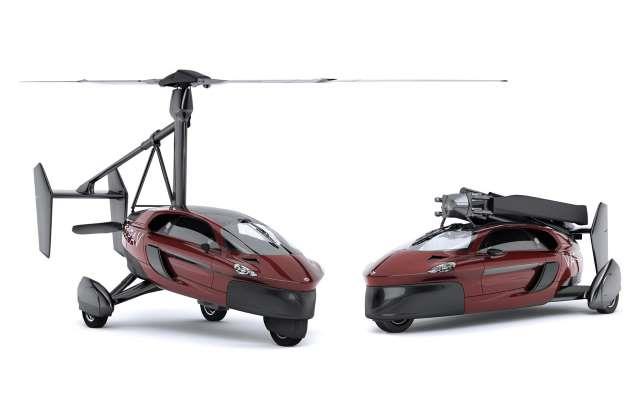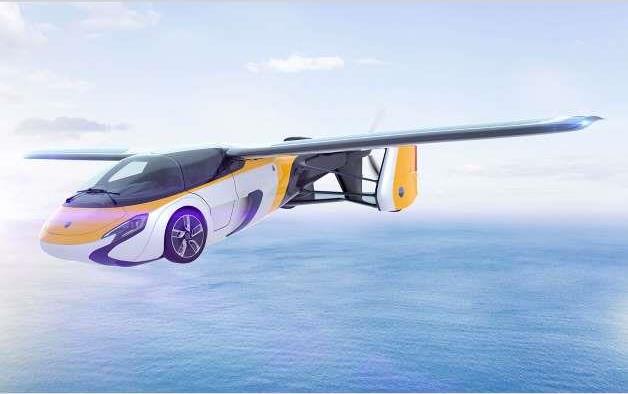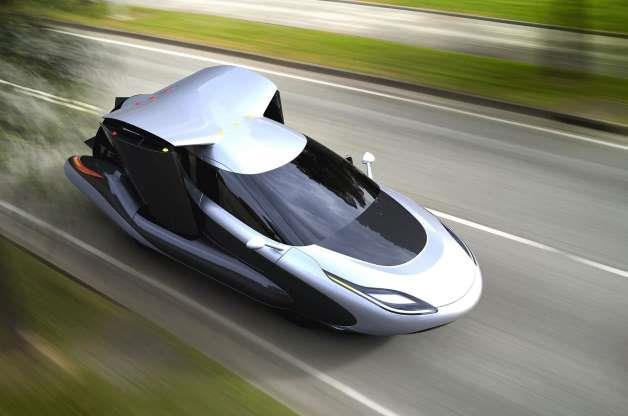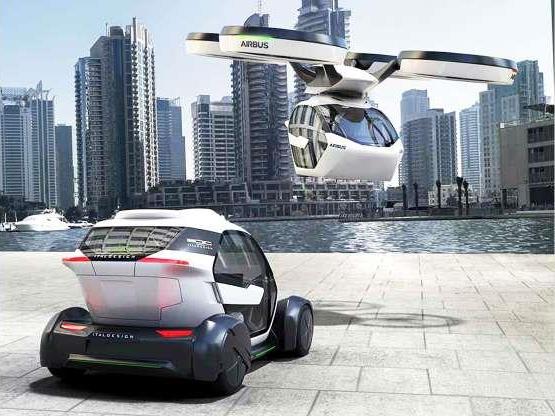A free template by Lucknowwebs.com for WYSIWYG WebBuilder 8
Powered by Sispro1-S
Nigel G Wilcox
Courtesy: pocket-lint.com
Paragon Of Space Publication
© Copyright Reserved - United Kingdom
Ideal Screen Composition 1024 x 768
History Introduction To Today
SITEMAP
SCIENCE RESEARCH
ABOUT
Desk
MAIN INDEX
Flying Cars
S'sonic
Stealth
Menu
Space
Transport
Menu
Topic
Menu
Study
Menu
Even before the first cars were invented, man has dreamed of creating road transport that can also fly.
But a commercially successful flying car has so far proved elusive. In the next few years several are in the running to get off the ground - in this story we take a look at more than a century of flying car development, and it’s quite a tale:
Curtiss Autoplane (1917)
With a length of 27 feet and a wing span of 40 feet, the Curtiss had a four-bladed propeller at the rear to get airborne. The Curtiss Autoplane did get off the ground, but not for very far. So although it was only capable of short hops it was still the world's first flying car.
MCP
Waterman Arrowbile (1937)
Using mainly Studebaker parts, Waldo Waterman (1894-1976) created a car that could fly as early as 1937, when the first prototype was capable of touching 120mph in the air. A further two machines were made before the project foundered. Waterman returned in 1957 with a revamped flying car called the Aerobile, powered by a Tucker Torpedo flat-six engine - but only the one prototype was produced.
MCP
Convair 103 (1944)
George G Spratt (1904-1998) and William Bushnell Stout (1880-1956) clubbed together to come up with this confection; the Convair 103 which confusingly was also known as the Skycar IV or Spratt-Stout Model 8. Despite having three names just one example was built and it worked fine, but it was more of a plane that could be used on the road rather than a car that could fly.
Fulton Airphibian (1946)
Robert Edison Fulton Jr (1909-2004) made his fortune during WW2 with a flight-and-combat simulator and when hostilities ended he decided that what the world needed was a car that could fly. The Airphibian was the result; a fuselage without wings, to which a rear section complete with wings could be attached. It was claimed to take just seven minutes to convert from car to plane and just four minutes to switch back. The first flying car to be approved by US authorities, the investors pulled out once 11 Airphibians had been built in the early 1950s - and the project collapsed.
Autocar
MCP
ConVairCar Model 118 (1947)
Theodore P "Ted" Hall (1898-1978) planned to make 160,000 examples of his Convair but didn't quite manage it; just two were built. He created a car which drove underneath a 'flight module' which attached to the car with its own engine and propeller.
The plan was to sell them at $1500 apiece but when one of the prototypes ran out of fuel and crashed on a routine test flight, killing the pilot, the plug was pulled and by 1949 it was all over.
Autocar
Taylor Aerocar (1949)
One of the best-known flying cars even though it surfaced decades ago, Moulton Taylor (1912-1995) hoped to put his Aerocar into full-scale production. It came pretty close too, with five airworthy examples produced before the project fell apart.
MCP
Taylor Aerocar (1949)
Capable of cruising in the air at 100mph and on the ground at 55-60mph, the Taylor Aerocar towed its own wings when in road mode; it was pretty ingenious really. But not ingenious enough to work commercially.
Autocar
MCP
Curtiss-Wright Air Car (1960)
When is a flying car not a flying car? The answer is when it hovers just above the ground, as the Curtiss-Wright was designed to do. Measuring 21 feet long and eight feet wide, the Air Car came about after the end of WW2 when the US military decided it needed to develop something that could skim the surface of land and sea.
Two fully functioning Air Cars were made, powered by a pair of Lycoming 180bhp aircraft engines and at full power the vehicle was capable of gliding along at up to 15 inches above ground while carrying a 1000 lb (455kg) payload.
Curtiss-Wright Air Car (1960)
Looking like a (very) overgrown fairground dodgem, the Air Car's top speed on the ground was 38mph. When the military lost interest, Curtiss-Wright attempted to modify the Air Car's design for civilian use, but for some reason there was no demand from consumers.
One Air Car survives, as pictured, in the US Army Transportation Museum at Ford Eustis in Virginia.
Autocar
MCP
Chitty Chitty Bang Bang (1968)
Wealthy Englishman Count Louis Zborowski (1895-1924) built the original Chitty Chitty Bang Bang with a 23-litre aero engine. He raced it at Brooklands where he was watched by James Bond creator Ian Fleming, who immortalised Chitty by writing a children's story which was turned into a screenplay by Roald Dahl; the movie arrived in 1968, after Fleming’s death in 1964. The car couldn't fly of course, even if on the screen it appeared to be able to.
Robson Kay
AVE Mizar (1971)
Why start from scratch when you can just take a mediocre product from Ford's model range and clip some wings to it? And so the Advanced Vehicle Engineers (AVE) Mizar was born; a Ford Pinto with the key parts of a Cessna Skymaster attached. The car did fly - for a while. But then the key people behind the project were all killed when their Mizar fell from the sky, and that was that.
Wikipedia Commons
Moller Sky Car M400
Paul Moller (born 1936) has been trying for more than half a century to come up with a viable flying car. The Sky Car M400 is his latest confection although it's been doing the rounds since the mid-1990s. Not just an aircraft, the M400 is a VTOL, or Vertical Take Off and Landing aircraft, so it doesn't need a runway.
Moller
Moller Sky Car M400
Predominantly an aircraft, the M400 can be driven on the road too, as it's narrow enough (under 8.5 feet) to comply with US regulations. The one M400 made was put up for sale on eBay in 2017, but it failed to sell.
Almost looks like the design from 'Wacky Races', a cartoon TV series of the 70's in the UK, with 'Dick Dasterdly and Mutley'. The car shape, for those that remember...
Moller
Terrafugia Transition (2020)
Terrafugia is based in Massachusetts but owned by Geely, the Chinese company that owns Volvo and Lotus. Set up in 2006, there are already around 100 people working for Terrafugia, which aims to start selling its Transition soon.
Dick Dasterdly and Mutley
Terrafugia
Terrafugia Transition (2020)
Powered by a Rotax piston engine, the Transition can drive at 70mph and fly at 107mph with a range of 489 miles. Originally intended to go on sale in 2011 at $194,000, the latest price estimate is $280,000.
Terrafugia
PAL-V Liberty (2019)
Dutch company PAL-V (Personal Air Land Vehicle) has been taking orders for its Liberty since the start of this year and it plans to deliver the first examples around a year from now. The design is based on the Carver One, which started out as the Vandenbrink Carver in 1999, a strange three-wheeled car that leans into corners.
PAL-V
PAL-V Liberty (2019)
Effectively a cross between a gyrocopter and a trike, the Liberty is powered by a 100bhp petrol engine in drive mode, to give a top speed of 100mph on the road. When flying, the engine’s power output doubles to 200bhp and the top speed increases to 112mph, but is happiest when cruising at 100mph.
Capable of cruising at up to 3500 metres above the ground, the Liberty can fly for up to 4.3 hours or 312 miles. One of our
writers had a go in a PAL-V Liberty simulator earlier this year, and it showed promise. PAL-V hopes it will get certification in the next year or so.
Aeromobil (2020)
By far the sexiest design out there, the Aeromobil looks futuristic and attainable at the same time. This Slovakian company reckons it’ll have the first example of its car with customers by 2020, priced from around €1.2m (£1.1 million). That might sound like a lot of money, but it’s no more than a top-end hypercar nowadays - and while those might be very fast, none of them can fly.
Aeromobil
Capable of switching between road and sky modes in less than three minutes, Aeromobil’s plan is to build 500 examples of its flying car, each one powered by a turbocharged 2.0-litre flat-four petrol engine. This acts as a generator for two electric motors that produce 110bhp to drive the front wheels when driving, but in flight mode the engine develops 300bhp to give a 162mph cruising speed.
Terrafugia TFX (2025)
You can't accuse Terrafugia of failing to think big. Before it has a viable product rolling off its production lines it's already thinking of what to sell from 2025, which will be here before we know it. This is the answer - the TF-X, which looks fabulous in plane form and pretty neat when being used as road transport.
Terrafugia
A petrol/electric hybrid with 300bhp on tap, the TF-X is intended to be fully autonomous with a 500-mile range at 200mph. As if the technical hurdles aren't enough, the legislative ones will be even bigger; the idea is that whoever buys a TF-X won't need a pilot's licence as they'll just punch in a destination and then be flown there by their Terrafugia.
Italdesign
Airbus Pop.Up
One idea that might reach fruition one day, but won’t happen any time soon, is the Airbus Pop.Up, designed in conjunction with Italdesign. It’s wonderfully neat as it features a carbon fibre pod which can be clipped onto a wheeled chassis or underneath a giant quadcopter.
Courtesy: msn - Richard Dredge 14.07.20
